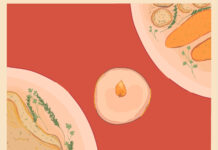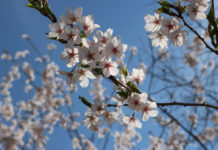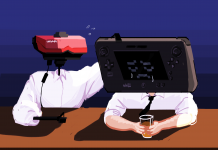I’m continually amazed at the kinds of things that people will throw in the garbage. For example, the other day a student from the apartment next door was moving out and put out a garbage bag full of plastic water bottles. Not surprisingly, a recent waste audit by the Region of Waterloo showed that 67 per cent of the material now going into the landfill could be recycled through the blue box and green bin programs. The Region of Waterloo encourages all Waterloo residents — students included — to use their green bin and blue box to the fullest to help save landfill space.
So, here are a few tips that you can follow to become a more responsible resident.
RECYCLE, RECYCLE, RECYCLE! Put as many things as possible into your blue box. Paper (including your old assignments, newspapers, and magazines), cardboard boxes, egg cartons, paper towel and toilet paper rolls, almost any type of plastic, shampoo bottles, water bottles, milk and juice cartons, metal cans, glass jars, aluminum cans and foil — all of these are recyclable.
Not sure what to do with it? The Region of Waterloo has set up a cool new website tool called the Waste Whiz. Just type in your item and get how-to disposal information in seconds. Check it out at wastewhiz.regionofwaterloo.ca.
Donate larger unwanted items such as clothing, kitchenware, small appliances, lamps, or blankets to Goodwill or resell it on Kijiji. This is a great way to save the planet, help others, and maybe even pocket a little extra money as well.
Use reusable coffee cups or mugs and recycle paper or plastic ones. Avoid buying coffee in styrofoam cups.
Recycle your old electronic equipment such as cartridges, cell phones, or computer mice. Look for the recycle bins conveniently located in the Student Life Centre’s lower level, just across from Campus Tech.
Buy organic as much as possible. Visit the St. Jacobs Farmers’ Market (check the bus schedules at the Turnkey Desk) or come to the Student Life Centre’s lower level on Thursdays from 9 a.m. to 1 p.m. to buy fresh produce from the farmers during September and October.
You can recycle plastic grocery bags in your blue box or bring reusable bags with you when you go grocery shopping.
Choose takeout food from restaurants that use recyclable plastic food containers or trays instead of styrofoam ones.
Another great way to get rid of many unwanted items that are still in perfectly good condition is to give them to friends and/or relatives as birthday or Christmas presents. This would work well with books, CDs, DVDs, mugs, giftware, Christmas decorations, games and toys, stuffed animals, puzzles, T-shirts, sweatshirts, and accessories such as gloves or scarves. If you don’t like shopping for presents, this strategy will save you both time and money!
Another way to be environmentally conscious is to use simple household products for basic cleaning instead of poisonous (and expensive) chemicals like Ajax and Clorox. Did you know that vinegar, baking soda, and lemon juice are great, effective, multipurpose cleaners for the kitchen and bathroom?
Biking and walking to class is already a great way to be an environmentally conscious student. And don’t forget to take the bus — it’s already paid for as part of your tuition costs!
Finally, when you do see litter on the ground outside your residence or apartment, pick it up and put it in the blue box or garbage. It helps to set a great example for others to follow.


































